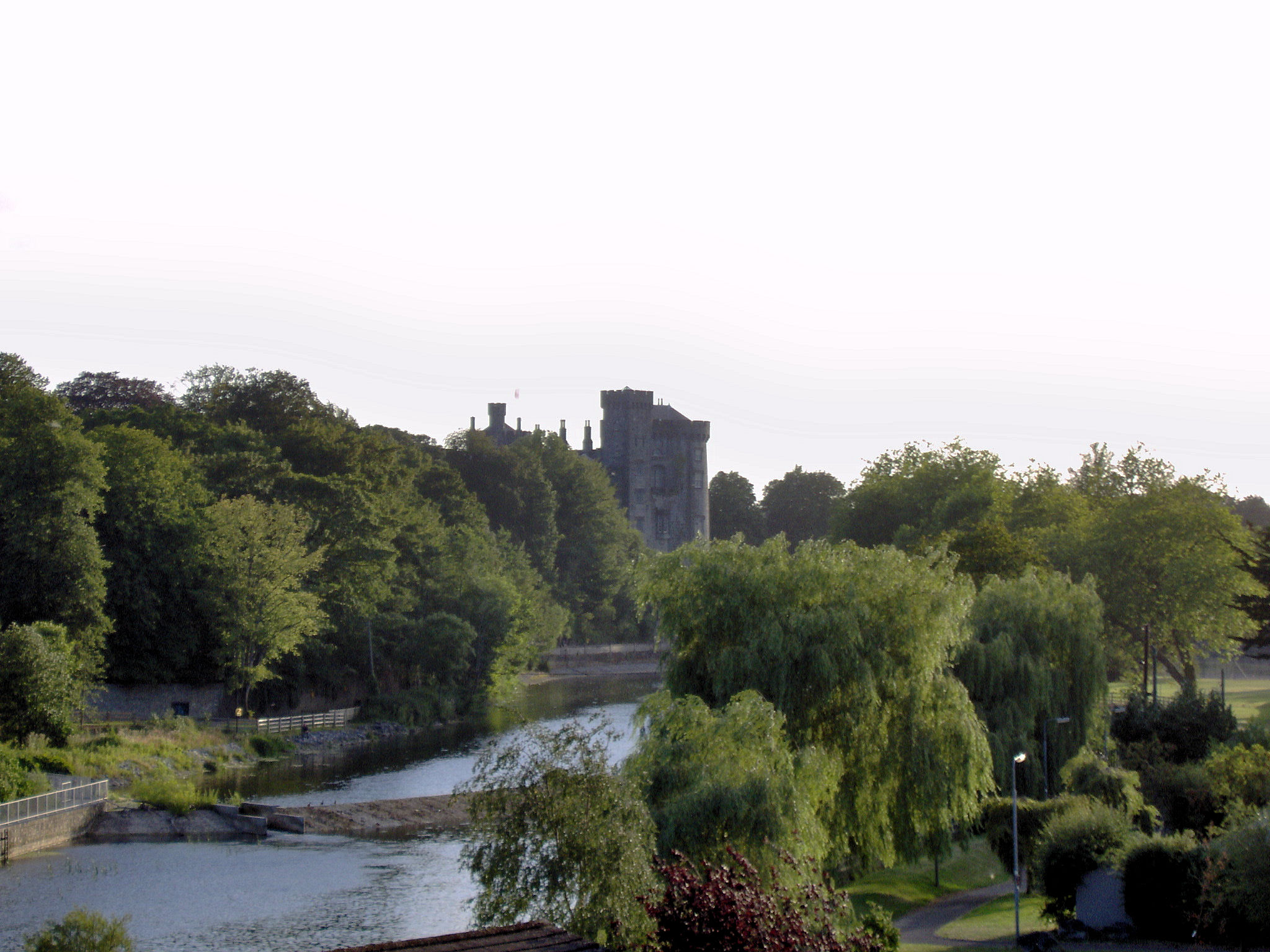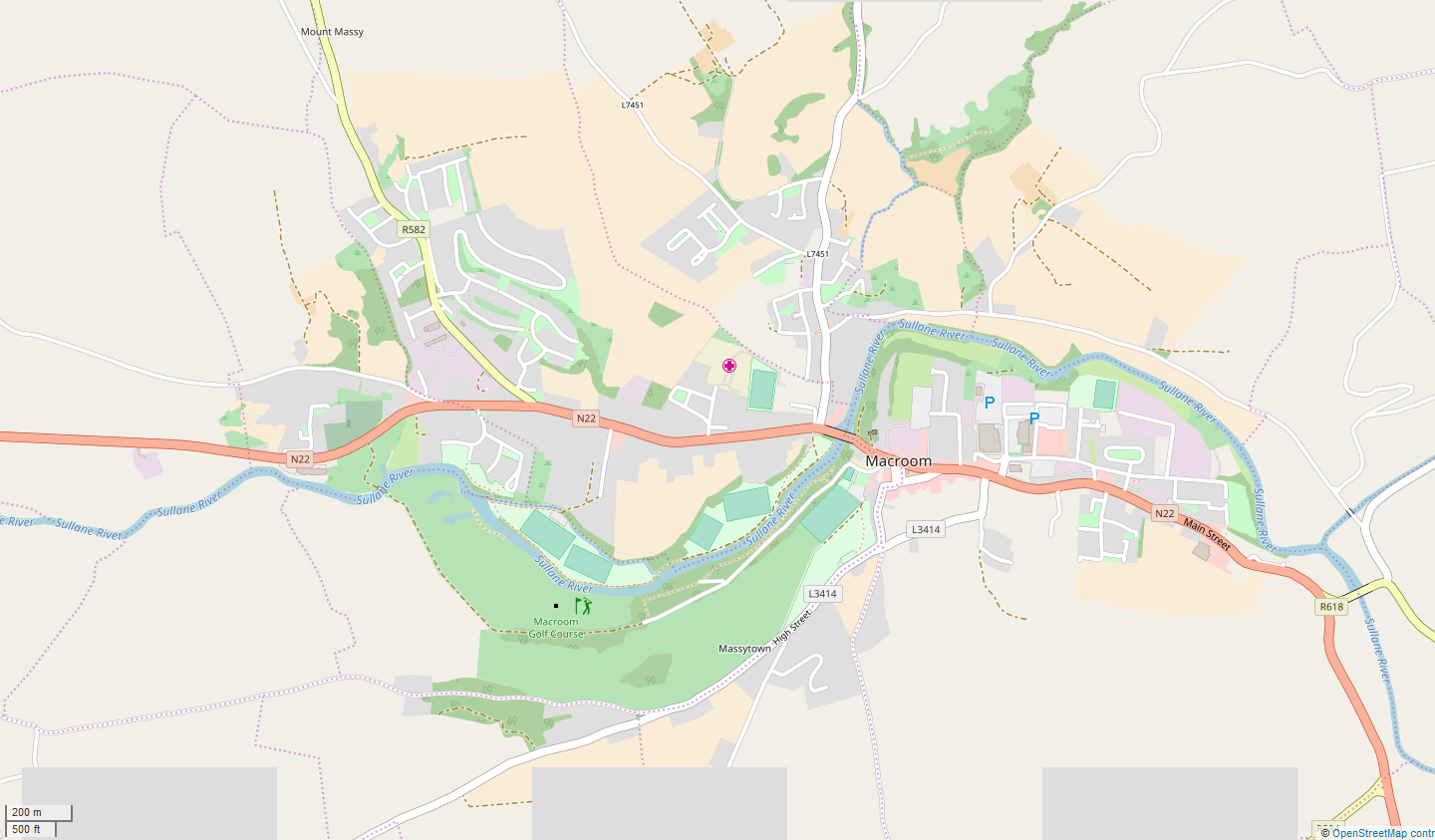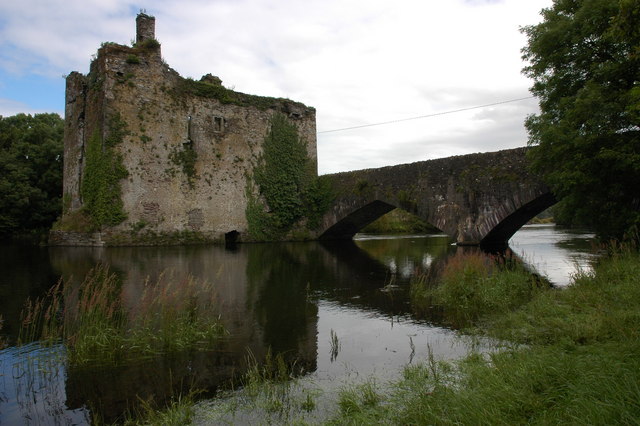|
Battle Of Macroom
The Battle of Macroom was a skirmish fought on 10 May 1650, near Macroom, County Cork, in southern Ireland, during the Cromwellian conquest of Ireland. An English Parliamentarian force under Roger Boyle, (Lord Broghill), defeated an Irish Confederate force under David Roche. Background Boyle had taken Cork for the English Parliamentarians by inducing its English Royalist garrison to defect to the Parliamentary side, which they had served until 1648. This was a major help to Oliver Cromwell's campaign in Ireland, as it secured for him most of Munster and its port towns. The Irish and Royalist troops in the province retreated to western County Kerry, which is a natural stronghold due to its remote and mountainous terrain. Battle David Roche, an Irish officer, organised an offensive, out of Kerry with 1,400 men in May 1650, in an effort to relieve the Siege of Clonmel. Cromwell sent Boyle to intercept Roche's force with 1,500 infantry and 500 cavalrymen. When Roche realised ... [...More Info...] [...Related Items...] OR: [Wikipedia] [Google] [Baidu] |
Cromwellian Conquest Of Ireland
The Cromwellian conquest of Ireland or Cromwellian war in Ireland (1649–1653) was the re-conquest of Ireland by the forces of the English Parliament, led by Oliver Cromwell, during the Wars of the Three Kingdoms. Cromwell invaded Ireland with the New Model Army on behalf of England's Rump Parliament in August 1649. Following the Irish Rebellion of 1641, most of Ireland came under the control of the Irish Catholic Confederation. In early 1649, the Confederates allied with the English Royalists, who had been defeated by the Parliamentarians in the English Civil War. By May 1652, Cromwell's Parliamentarian army had defeated the Confederate and Royalist coalition in Ireland and occupied the country, ending the Irish Confederate Wars (or Eleven Years' War). However, guerrilla warfare continued for a further year. Cromwell passed a series of Penal Laws against Roman Catholics (the vast majority of the population) and confiscated large amounts of their land. As punishment ... [...More Info...] [...Related Items...] OR: [Wikipedia] [Google] [Baidu] |
Macroom
Macroom (; ga, Maigh Chromtha) is a market town in County Cork, Ireland, located in the valley of the River Sullane, halfway between Cork city and Killarney. Its population has grown and receded over the centuries as it went through periods of war, famine and workhouses, forced emigration and intermittent prosperity. The 2011 census gave an urban population of 3,879 people, while the 2016 census recorded 3,765 people. Macroom began as a meeting place for the druids of Munster. It is first mentioned is in 6th-century records, and the immediate area hosted a major battle involving the Irish king Brian Boru. During the middle ages, the town was invaded by a succession of warring clans, including the Murcheatach Uí Briain and Richard de Cogan families. In the early modern period the MacCarthy's took control and later the area found prosperity via milling. The MacCarthys built a series of tower houses, some of which survive. The family lost influence during the Williami ... [...More Info...] [...Related Items...] OR: [Wikipedia] [Google] [Baidu] |
County Cork
County Cork ( ga, Contae Chorcaí) is the largest and the southernmost county of Ireland, named after the city of Cork, the state's second-largest city. It is in the province of Munster and the Southern Region. Its largest market towns are Mallow, Macroom, Midleton, and Skibbereen. the county had a population of 581,231, making it the third- most populous county in Ireland. Cork County Council is the local authority for the county, while Cork City Council governs the city of Cork and its environs. Notable Corkonians include Michael Collins, Jack Lynch, Roy Keane, Sonia O'Sullivan and Cillian Murphy. Cork borders four other counties: Kerry to the west, Limerick to the north, Tipperary to the north-east and Waterford to the east. The county contains a section of the Golden Vale pastureland that stretches from Kanturk in the north to Allihies in the south. The south-west region, including West Cork, is one of Ireland's main tourist destinations, known for it ... [...More Info...] [...Related Items...] OR: [Wikipedia] [Google] [Baidu] |
Confederate Ireland
Confederate Ireland, also referred to as the Irish Catholic Confederation, was a period of Irish Catholic self-government between 1642 and 1649, during the Eleven Years' War. Formed by Catholic aristocrats, landed gentry, clergy and military leaders after the Irish Rebellion of 1641, the Confederates controlled up to two thirds of Ireland from their base in Kilkenny; hence it is sometimes called the "Confederation of Kilkenny". The Confederates included Catholics of Gaelic and Anglo-Norman descent. They wanted an end to anti-Catholic discrimination within the Kingdom of Ireland and greater Irish self-governance; many also wanted to roll back the plantations of Ireland. Most Confederates professed loyalty to Charles I of England in the belief they could reach a lasting settlement in return for helping defeat his opponents in the Wars of the Three Kingdoms. [...More Info...] [...Related Items...] OR: [Wikipedia] [Google] [Baidu] |
Roger Boyle, 1st Earl Of Orrery
Roger Boyle, 1st Earl of Orrery (25 April 1621 – 16 October 1679), styled Lord Broghill from 1628 to 1660, was an Anglo-Irish soldier and politician who sat in the House of Commons of England at various times between 1654 and 1679. Boyle fought in the Irish Confederate Wars (part of the Wars of the Three Kingdoms) and subsequently became known for his antagonism towards Irish Catholics and their political aspirations. He was also a noted playwright and writer on 17th-century warfare. Background Boyle was the third surviving son of Richard Boyle, 1st Earl of Cork and his second wife, Catherine Fenton, daughter of Sir Geoffrey Fenton of Dublin. He was named after his parents' first son who had died at age nine. He was created Baron of Broghill in the Peerage of Ireland on 28 February 1628, a few months before his 7th birthday. Boyle was educated at Trinity College, Dublin in 1630; and at Gray's Inn in 1636. From 1636 to 1639 he travelled abroad in France, Switzerland and It ... [...More Info...] [...Related Items...] OR: [Wikipedia] [Google] [Baidu] |
Cromwellian Conquest Of Ireland
The Cromwellian conquest of Ireland or Cromwellian war in Ireland (1649–1653) was the re-conquest of Ireland by the forces of the English Parliament, led by Oliver Cromwell, during the Wars of the Three Kingdoms. Cromwell invaded Ireland with the New Model Army on behalf of England's Rump Parliament in August 1649. Following the Irish Rebellion of 1641, most of Ireland came under the control of the Irish Catholic Confederation. In early 1649, the Confederates allied with the English Royalists, who had been defeated by the Parliamentarians in the English Civil War. By May 1652, Cromwell's Parliamentarian army had defeated the Confederate and Royalist coalition in Ireland and occupied the country, ending the Irish Confederate Wars (or Eleven Years' War). However, guerrilla warfare continued for a further year. Cromwell passed a series of Penal Laws against Roman Catholics (the vast majority of the population) and confiscated large amounts of their land. As punishment ... [...More Info...] [...Related Items...] OR: [Wikipedia] [Google] [Baidu] |
Oliver Cromwell
Oliver Cromwell (25 April 15993 September 1658) was an English politician and military officer who is widely regarded as one of the most important statesmen in English history. He came to prominence during the 1639 to 1651 Wars of the Three Kingdoms, first as a senior commander in the Parliamentarian army and then as a politician. A leading advocate of the execution of Charles I in January 1649, which led to the establishment of the Republican Commonwealth of England, Scotland and Ireland, he ruled as Lord Protector from December 1653 until his death in September 1658. Cromwell nevertheless remains a deeply controversial figure in both Britain and Ireland, due to his use of the military to first acquire, then retain political power, and the brutality of his 1649 Irish campaign. Educated at Sidney Sussex College, Cambridge, Cromwell was elected MP for Huntingdon in 1628, but the first 40 years of his life were undistinguished and at one point he contemplated emigrati ... [...More Info...] [...Related Items...] OR: [Wikipedia] [Google] [Baidu] |
Siege Of Clonmel
The Siege of Clonmel, from 27 April to 18 May 1650, took place during the Cromwellian conquest of Ireland, when Clonmel in County Tipperary was besieged by 8,000 men from the New Model Army under Oliver Cromwell. The garrison of 1,500 commanded by Hugh Dubh O'Neill eventually surrendered after inflicting heavy casualties on the besiegers. O'Neill escaped with some of his troops, but although the Irish Confederate Wars continued until 1653, Clonmel ended effective Royalist resistance in Ireland, and Cromwell returned to England immediately afterwards. Background The garrison at Clonmel changed as the arrival of the Puritan army through Kilkenny became imminent. In November 1649, the town's Mayor John Bennet White wrote to the Duke of Ormond seeking military assistance. Colonel Oliver Stephenson and part of the old Confederate army, mostly from County Clare, took up quarters. The southern Confederates were not fully trusted by the townspeople, particularly after ... [...More Info...] [...Related Items...] OR: [Wikipedia] [Google] [Baidu] |
Boetius MacEgan
Boetius MacEgan ( ga, Baothnalach Mac Aodhagáin; died May 1650) was a 17th-century Irish Roman Catholic Bishop of Ross. He was born in the barony of Duhallow in north-west County Cork and educated in France and Spain. He returned to his native Munster as a Franciscan friar in the 1630s and was promoted to several positions of importance in the Franciscan order. He was an enthusiastic supporter of the Confederation of Kilkenny, which controlled most of Ireland between the 1641 uprising and the Cromwellian conquest of 1649. In 1645 a new Papal nuncio landed in Ireland with arms and funds to support the rebellion and befriended MacEgan, appointing him chaplain general of the Ulster forces. In this capacity MacEgan accompanied the Confederation forces on many campaigns and was present at the Confederation victories at the Battle of Benburb in 1646, Limerick and Kilkenny. In 1646 he was proposed as bishop of Ross by the nuncio himself and consecrated at Waterford in 1648, but pro ... [...More Info...] [...Related Items...] OR: [Wikipedia] [Google] [Baidu] |
Oxford University Press
Oxford University Press (OUP) is the university press of the University of Oxford. It is the largest university press in the world, and its printing history dates back to the 1480s. Having been officially granted the legal right to print books by decree in 1586, it is the second oldest university press after Cambridge University Press. It is a department of the University of Oxford and is governed by a group of 15 academics known as the Delegates of the Press, who are appointed by the vice-chancellor of the University of Oxford. The Delegates of the Press are led by the Secretary to the Delegates, who serves as OUP's chief executive and as its major representative on other university bodies. Oxford University Press has had a similar governance structure since the 17th century. The press is located on Walton Street, Oxford, opposite Somerville College, in the inner suburb of Jericho. For the last 500 years, OUP has primarily focused on the publication of pedagogical texts a ... [...More Info...] [...Related Items...] OR: [Wikipedia] [Google] [Baidu] |
1650 In Ireland
Events from the year 1650 in Ireland. Events *March 27 – Confederate Ireland's besieged capital Kilkenny is surrendered to Cromwell. *April 27 – Cromwellian conquest of Ireland: Oliver Cromwell joins the siege of Clonmel in person. *May 1 – Charles II repudiates his alliance with Irish Catholics in favour of one with Scottish Covenanters in the Treaty of Breda. Most English Royalists in Ireland surrender to the Parliamentarians after this point. *May 10 – Battle of Macroom: Irish force defeated by English Parliamentarians. *May 17 – Siege of Clonmel: Cromwell's troops storm the walls, taking up to 2,500 casualties. Although they are unable to take the town by force, the garrison, without supplies, slips away under cover of darkness. *May 26 – Cromwell leaves Ireland from Youghal and passes his command to Henry Ireton. *June 19 – Battle of Tecroghan: an Irish force successfully relieves the siege of Tecroghan Castle in County Westmeath *June 21 – Battle of Scarrifh ... [...More Info...] [...Related Items...] OR: [Wikipedia] [Google] [Baidu] |
Battles Of The Irish Confederate Wars
A battle is an occurrence of combat in warfare between opposing military units of any number or size. A war usually consists of multiple battles. In general, a battle is a military engagement that is well defined in duration, area, and force commitment. An engagement with only limited commitment between the forces and without decisive results is sometimes called a skirmish. The word "battle" can also be used infrequently to refer to an entire operational campaign, although this usage greatly diverges from its conventional or customary meaning. Generally, the word "battle" is used for such campaigns if referring to a protracted combat encounter in which either one or both of the combatants had the same methods, resources, and strategic objectives throughout the encounter. Some prominent examples of this would be the Battle of the Atlantic, Battle of Britain, and Battle of Stalingrad, all in World War II. Wars and military campaigns are guided by military strategy, whereas bat ... [...More Info...] [...Related Items...] OR: [Wikipedia] [Google] [Baidu] |








.jpg)
